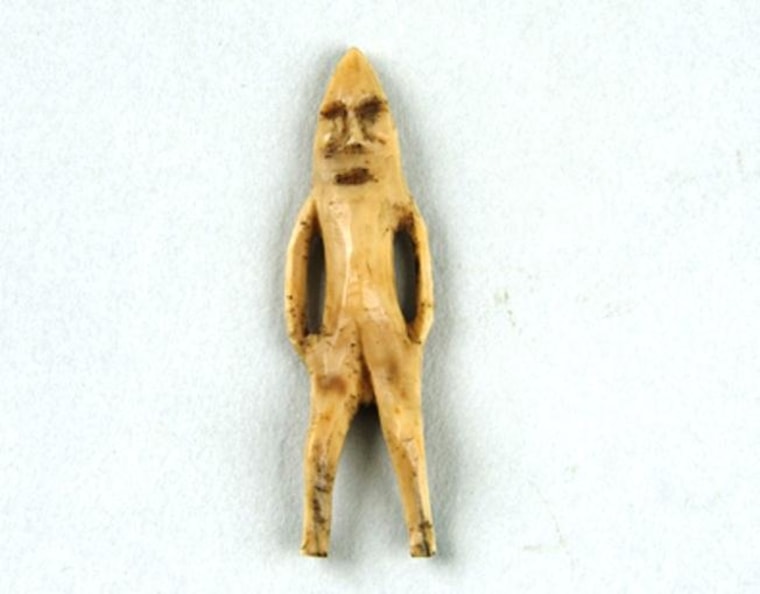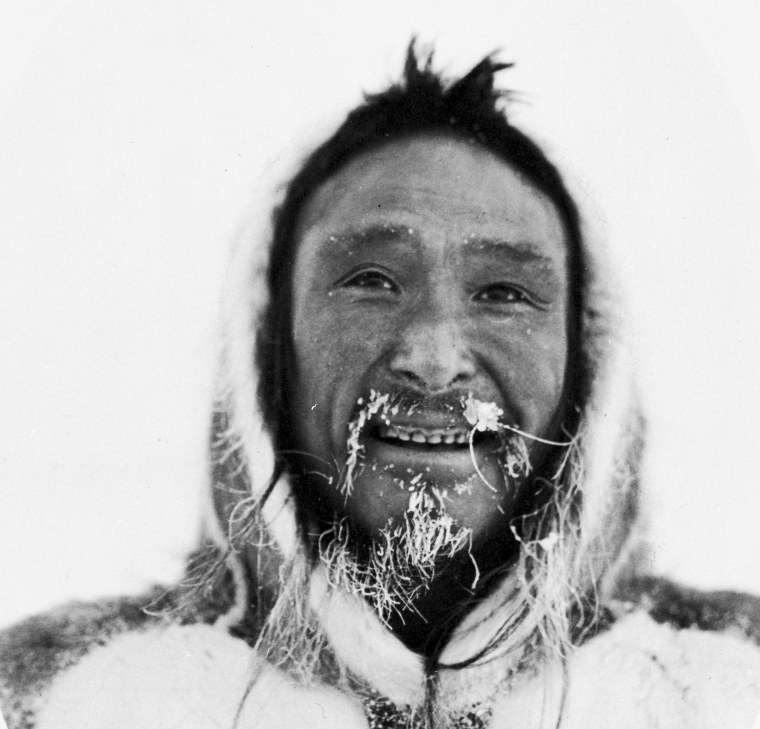Genetic analysis of present-day Arctic residents as well as ancient human remains reveals a previously unknown mass migration into the Americas from Siberia — and shows that an isolated Arctic culture known as the Dorset disappeared without a genetic trace centuries ago.
"One might almost say, kind of jokingly and very informally, that the Dorsets were the 'hobbits' of the Eastern Arctic, a very strange and very conservative people that we're only just getting to know a little bit," said William Fitzhugh, an anthropologist at the Smithsonian's National Museum of Natural History and one of the authors of the research appearing in Friday's issue of the journal Science.
The Dorset people are known only by what they left behind, including primitive stone tools and beautiful wooden and ivory figurines. The DNA analysis suggests that their ancestors came to Arctic Canada and Greenland from Siberia about 4,500 years ago, and lived in chilly isolation for more than three millennia.
The research was based on analysis of more than 150 DNA samples from ancient and present-day humans from Greenland, Canada, Alaska and the Aleutian Islands, and Siberia.
Previously, researchers had thought the Dorset were descended from migrants who came to the New World earlier, but the DNA analysis shows that their ancestors were not part of the three previously known waves of migration that go back as far as 15,000 years. Instead, they appear to represent part of a separate Paleo-Eskimo wave of migration.
Hairs from Greenland trace migration history
The new study also confirms that the Arctic region's modern-day Inuit peoples are descended from the migrants who came after the Dorset. This wave, known as the Thule or Neo-Eskimo migration, occurred about 1,000 years ago. There was virtually no evidence of genetic or cultural interaction between the Dorset and the Thule peoples. Within a couple of centuries of the Thule hunters' arrival, the Dorset had vanished, living on only as "gentle giants" in the tales told by the Inuit.
"The real mystery is therefore why the Dorset disappeared so completely," University of Waterloo anthropologist Robert Park said in a Science commentary.

Some have suggested that the Thule invaders wiped out the Dorset people, and Fitzhugh acknowledged that it could have been "an example of prehistoric genocide." The Thule people had developed advanced bows and arrows, whale-hunting tools and dogsleds — technologies in which the Dorset were deficient. The Thule also favored a military-style discipline that might have contrasted with the Dorset culture's simpler ways.
"This meeting between these two peoples would have been a very stark meeting," Fitzhugh said, "between people with very conservative, beautiful stone technology and beautiful artwork and so on, but socially and economically, they were just no match for this onslaught from this Thule machine. ... They were, in a sense, sitting ducks."
The Dorset people probably numbered no more than 3,000 people in the Canadian Arctic, and 1,000 more in Greenland, Fitzhugh said. It's possible that inbreeding and disease helped push the culture into extinction.
Analysis of mitochondrial DNA suggests that the Dorset people were descended from a single maternal line. "I can't remember any other evidence of a population having such low diversity in the mitochondrial DNA," said senior study author Eske Willerslev, director of the Center for GeoGenetics at the University of Copenhagen's Natural History Museum of Denmark.

The study knocked down a couple of hypotheses about the Dorset people: Some experts had suggested the Dorset descended from a previous wave of migrants known as the Athabascans, or that descendants of the Dorsets lived on until the 20th century as part of a Canadian island community known as the Sadlermiut. Willerslev and his colleagues found no evidence of strong genetic links among those groups.
However, the study's lead author, Maanasa Raghavan of the Center for GeoGenetics, said that all four of the groups that came to the New World from Siberia — ranging from Native Americans to the Athabascans to the Paleo-Eskimos and the Inuit — are more closely related to each other than to any other modern-day human populations.
"We could potentially consider a meta-population of a sort, which settled Beringia and has been incubating there, and has been sending migration pulses into the Americas at times, and which gives rise to these four different pulses," she said.
Raghavan, Fitzhugh and Willerslev are among 56 authors of "The Genetic Prehistory of the New World Arctic," published in Science.